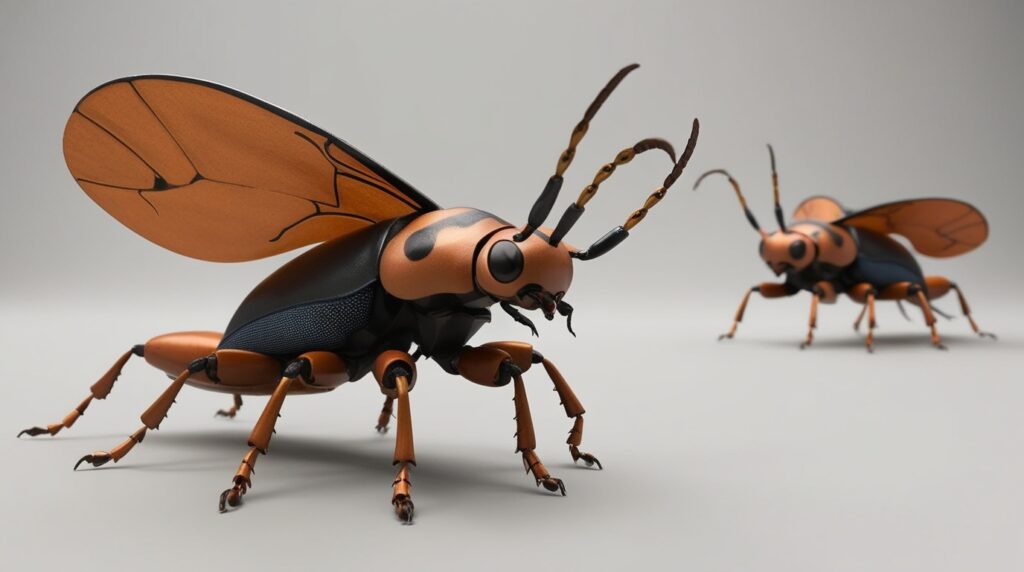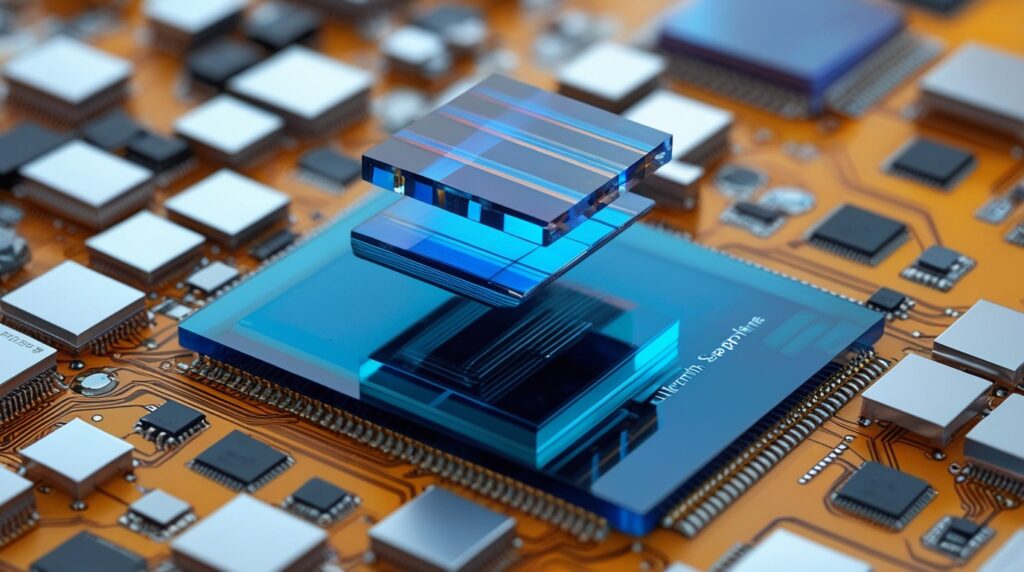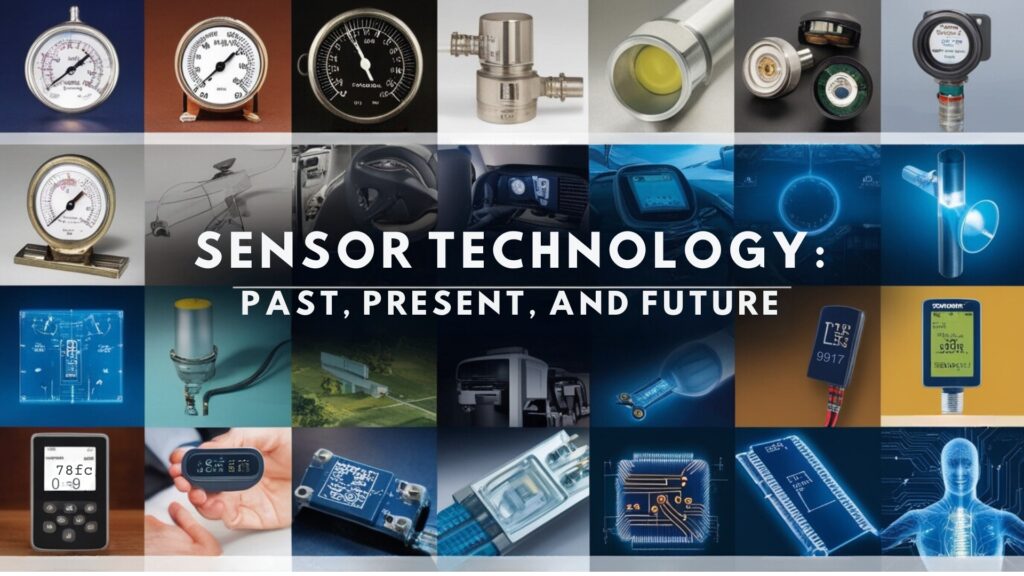
Introduction to Fundamentals of Sensor Technology
Fundamentals of Sensor Technology encompass the principles, classifications, and applications of sensors, which are devices that detect and respond to physical stimuli by converting these changes into measurable electrical signals. Sensors play an integral role in numerous fields, including consumer electronics, industrial automation, healthcare, and environmental monitoring, making them crucial for both everyday life and advanced technological applications.
This technology can be categorized based on operational principles, output types, and specific applications. Sensors are primarily classified into passive and active types, with passive sensors responding directly to stimuli without external power, while active sensors require power for operation. Furthermore, sensors can be analog or digital, each offering distinct advantages depending on the requirements of the application. Understanding these classifications is vital for the effective design and integration of sensor systems across various sectors, from automotive safety to smart home devices.
Significant advancements in sensor technology have been driven by the emergence of the Internet of Things (IoT) and Artificial Intelligence (AI), leading to enhanced data collection and processing capabilities. However, challenges persist, particularly regarding data privacy, production costs, and the need for more sophisticated materials and designs to meet evolving demands. The future of sensor technology is poised for transformation, with ongoing research focusing on improving performance, power efficiency, and integrating smart features to enhance operational capabilities in an increasingly interconnected world.
The historical evolution of sensor technology reflects its growing complexity and sophistication, beginning with basic mechanical and electrical devices and advancing to microelectromechanical systems (MEMS) and smart sensors equipped with wireless communication capabilities. This trajectory illustrates not only the technological advancements but also the expanding applications of sensors, which are expected to redefine industries and improve quality of life by 2030.
Types of Sensors
Sensors can be classified based on various criteria, including their operational principles, the type of input required, and the nature of their output. This classification aids in the selection of appropriate sensors for specific applications.
Classification by Operation Principle
Passive Sensors
Passive sensors do not require any external power source to generate an output. They respond directly to an external stimulus and produce an electrical signal as a result. Common examples of passive sensors include thermistors, photodiodes, and strain gauges, which operate by detecting changes in physical parameters like temperature, light, or mechanical deformation.
Active Sensors
In contrast, active sensors necessitate a continuous input of power to function. They modify their internal properties in response to external stimuli, generating an output signal. Examples include RADAR systems, accelerometers, and gas sensors, which require electric power for operation.
Electrical, Chemical, and Mechanical Sensors
- Electrical Sensors: These sensors detect physical parameters and convert them into electrical signals. They are prevalent in automation applications and include devices like NTC sensors and humidity sensors.
- Chemical Sensors: These sensors react to chemical changes and provide information based on chemical reactions. An example is the pH sensor, which changes color according to pH levels.
- Mechanical Sensors: Utilizing mechanical mechanisms, these sensors detect physical parameters through deformation or movement. Examples include touch sensors and stress gauges.
Classification by Output Type
Analog Sensors
Analog sensors produce a continuous output proportional to the measured physical quantity. Common analog sensors include temperature sensors and pressure sensors, which provide varying levels of output depending on the input they receive.
Digital Sensors
Digital sensors yield discrete outputs, typically represented in binary form (0 or 1). They are increasingly preferred in modern applications due to their reliability and ease of integration with digital systems.
Common Types of Sensors
Various sensor types serve specific functions across multiple domains, including:
- Temperature Sensors: Such as thermocouples and thermistors.
- Humidity Sensors: For measuring moisture levels in the air.
- Pressure Sensors: To gauge force or pressure changes.
- Light Sensors: For detecting ambient light levels.
- Proximity Sensors: To sense the presence of nearby objects.
- Touch Sensors: Used in touchscreen devices and applications. In everyday life, sensors play critical roles, being embedded in diverse technologies from smartphones to industrial equipment. Their classification and understanding of operational principles are vital for the effective design and application in various fields.
Operating Principles
Sensors are devices that detect and respond to changes in their environment by converting these physical changes into electrical signals. Understanding the operating principles of sensors is essential for their effective application in various fields, from consumer electronics to industrial automation and healthcare.
Components of a Sensor
A typical sensor consists of three main parts: the sensing element, the transduction element, and the signal processing unit.
Sensing Element
The sensing element interacts directly with the environment to detect physical stimuli, such as temperature, pressure, or light. For example, in a mobile phone’s touch sensor, the sensing element could be a capacitive surface that detects changes in electrical properties when touched. This element is crucial as it defines the sensor’s responsiveness to the specific physical quantity being measured.
Transducer
The transducer is responsible for converting the change in the sensing element’s property into an electrical signal. This could involve alterations in resistance, capacitance, or voltage, depending on the nature of the sensing element and the physical change being measured. The transduction process ensures that the detected information is transformed into a form that can be processed and interpreted by other components in a system.
Signal Processing Unit
Many sensors incorporate signal processing circuitry to enhance the quality and usability of the output signal. This circuitry can condition, amplify, filter, or otherwise process the electrical signal to improve its accuracy, stability, and compatibility with the rest of the system. After processing, the sensor delivers its output through an output interface, which may present the data as an analog voltage, current, or digital signal.
Working of Sensors
The working of sensors involves several key steps:
- Detection: The sensing element detects a physical input, such as a change in temperature or pressure.
- Transduction: The transducer converts this physical change into an electrical signal.
- Signal Conditioning: Signal conditioning components, like amplifiers and filters, optimize the electrical signal for accuracy.
- Output Generation: The processed signal is outputted, allowing it to trigger actions or provide data for further processing.
Applications of Sensors
Sensors are integral to a multitude of applications across various industries. In the automotive industry, for instance, modern vehicles are equipped with numerous sensors for safety and performance enhancement, such as metal oxide semiconductor sensors that detect gas composition through conductivity changes.
Additionally, level sensors, biosensors, and temperature sensors each serve critical functions in monitoring and controlling processes within their respective domains. By understanding these operating principles, engineers and developers can better design and implement sensor systems that meet the demands of specific applications.
Sensor Design
Overview
Sensor design is a critical aspect of developing effective sensing technologies that meet specific application needs. A sensor functions by detecting environmental changes and converting them into measurable electrical signals. The design process involves various considerations including material selection, sensing element functionality, and signal processing capabilities.
Material Selection
The choice of materials is pivotal in sensor design as it influences both mechanical and electrical properties. Commonly utilized materials include polymers, textiles, and composites, each offering unique benefits such as flexibility, sensitivity, and durability. Polymers, for instance, are favored for their versatility in fabrication and mechanical properties, while textiles like silk and cotton can provide isotropic deformation suitable for wearable applications.
Advanced materials, including graphene and nanocomposites, have emerged as promising candidates due to their enhanced electrical conductivity and mechanical strength.
Sensing Elements
The sensing element is the core component that interacts directly with the measured parameter, such as temperature, pressure, or light. Various types of sensing elements can be employed depending on the application. For example, piezoelectric materials convert mechanical strain into electrical signals, while resistive elements may change resistance in response to environmental stimuli. The design of these elements must ensure high sensitivity and rapid response times to effectively capture real-world data.
Signal Processing
Once the sensing element detects a change, the signal must be processed to be useful. This involves amplifying the signal, filtering noise, and converting it into a digital format if necessary. The integration of artificial intelligence (AI) and machine learning technologies with sensor data has revolutionized this process, allowing for advanced analytics and predictive capabilities in applications ranging from industrial automation to smart healthcare systems.
Advanced Features
Ongoing developments in materials technology are paving the way for smarter sensors with features such as improved fidelity, lower cost, and enhanced reliability. The miniaturization of sensors allows for compact designs that can be integrated into a wider range of devices, including Internet of Things (IoT) applications. Wireless sensor networks also facilitate real-time data collection and communication, significantly enhancing operational efficiency in various sectors.
Challenges and Future Trends
Emerging Challenges in Sensor Technology
The evolution of sensor technology is accompanied by a significant increase in the number of data sources, necessitating advancements in data treatment methods. Future developments in sensor technology will heavily depend on technical breakthroughs in algorithmic solutions that enhance the accuracy, efficiency, and response time of sensors, while also generating valuable insights through data mining.
Additionally, there is a pressing need to address the challenges associated with the mass production of high-performance materials and novel sensor structures, as well as to reduce production costs for flexible micro-pressure sensors.
Integration of AI and IoT
The integration of Artificial Intelligence (AI) and the Internet of Things (IoT) presents exciting opportunities for sensor technology. By 2030, advancements in AI-driven sensor networks will enable real-time data collection and analysis across various sectors, including healthcare, environmental monitoring, and consumer electronic. This integration is poised to enhance automation, efficiency, and safety, ultimately transforming industries and improving quality of life.
Future Research Directions
Future research in sensor technology will focus on enhancing privacy standards and security protocols, especially in shared mobility services that are subject to regulations such as the General Data Protection Regulation (GDPR). Researchers will need to explore methodologies for anonymizing and encrypting sensitive data collected from vehicles and participants in mobility applications, ensuring compliance while optimizing the sharing of information among stakeholders.
Technological Advancements on the Horizon
By 2030, significant advancements in are expected, including improvements in precision, power efficiency, quantum integration, and biocompatibility. These innovations will redefine industries and elevate the capabilities of sensor technologies beyond current expectations. As ongoing research and development efforts pave the way for these advancements, the decade ahead is anticipated to be a transformative period for sensor technology and its applications in an increasingly connected, data-driven world.
Historical Development
Sensor technology has evolved significantly since its inception in the early 20th century. Initially, basic mechanical and electrical sensors were primarily designed for industrial applications, setting a foundation for future innovations. The mid-20th century marked a pivotal breakthrough with the introduction of semiconductor-based sensors, which greatly enhanced accuracy and sensitivity, paving the way for advanced developments in the field.
As the late 20th century approached, the advent of microelectromechanical systems (MEMS) revolutionized sensor technology. These compact yet powerful sensors enabled miniaturization without compromising performance, significantly transforming various applications across industries. The early 2000s heralded the era of the Internet of Things (IoT), which further catalyzed the evolution of sensor technology. Smart sensors emerged, equipped with wireless communication and data processing capabilities, allowing them to connect and interact seamlessly with other devices.
The ongoing advancement in sensor technology has been driven by the need for enhanced data collection, processing, and real-time responses. This drive has fostered innovations in diverse sectors, including healthcare, automotive, industrial automation, and environmental monitoring. Notably, the rise of AI-driven sensor networks and the demand for more precise and efficient sensors are set to redefine industries and improve quality of life by 2030.
Case Studies in Fundamentals of Sensor Technology
Patient Safety and IoT Interventions
In recent years, there has been a growing interest in the application of Internet of Things (IoT) technologies to improve patient safety in healthcare settings. A study investigating the impact of IoT-based interventions revealed positive outcomes on various aspects of patient safety. Although the research did not find statistically significant changes in mean patient fall rates, qualitative interviews with nursing staff indicated a perceived reduction in patient falls and improvements in direct care time.
This suggests that while quantitative metrics may not show immediate results, the qualitative feedback from healthcare providers highlights the potential benefits of integrating IoT technologies into clinical practice.
Environmental Monitoring and Green Technology
IoT-based environmental monitoring systems have emerged as pivotal tools in mitigating environmental hazards. The Lancet Commission reported that over 9 million people die annually due to global pollution, emphasizing the urgency of deploying advanced monitoring technologies. Through real-time data collection and analysis, these systems can detect harmful pollutants and chemical spills, thereby enabling timely interventions by governments and industries to protect air, soil, and water quality.
This data-driven approach allows for predictive maintenance and resource management, making it an essential strategy for addressing the challenges posed by climate change.
Home Health Care Dynamics
The rise of digital technologies has transformed the landscape of home healthcare. In Germany, for instance, approximately 89% of individuals prefer receiving care at home, a trend mirrored by a 30.7% increase in home deaths in the United States from 2003 to 2017. This shift necessitates a re-evaluation of caregiver-patient relationships, particularly in palliative care settings.
The complexities faced by informal caregivers—who often serve dual roles as both caregivers and recipients of care—highlight the need for understanding the emotional and practical dynamics involved in home-based care scenarios.
Innovations in Air Quality Monitoring
Recent advancements in sensor technology have revolutionized air quality monitoring. Traditional monitoring relied on expensive and cumbersome instruments, but the advent of low-cost air quality sensors has democratized access to air quality data. These devices can be deployed widely, allowing for localized and real-time pollution assessments.
This grassroots approach not only raises awareness about pollution issues but also empowers communities to advocate for necessary changes in environmental policies. The shift from traditional equipment to accessible sensor technologies underscores a significant evolution in how environmental challenges are understood and addressed.



